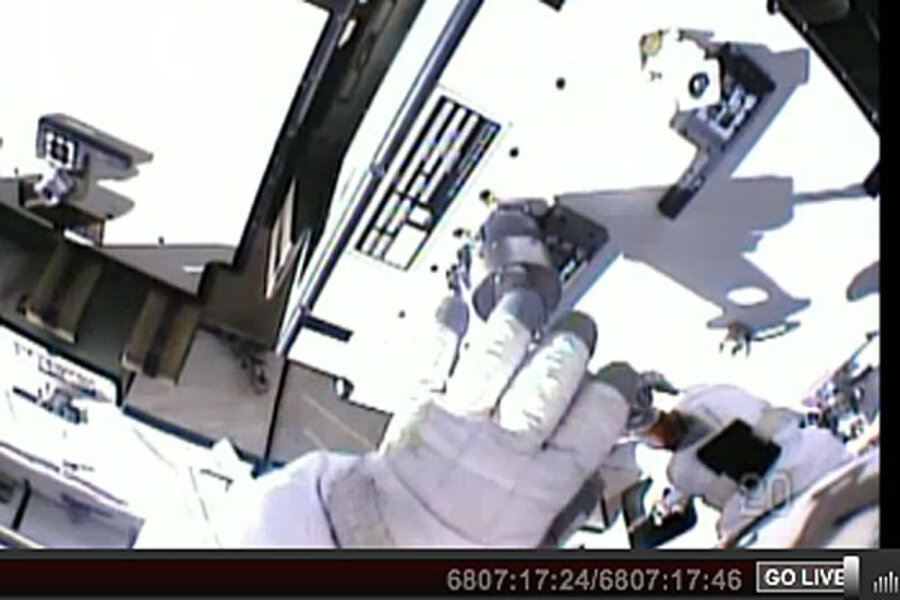NASA astronauts fix leak on International Space Station
Loading...
UPDATED: 4:30 p.m., Saturday.
As a nearly five-hour spacewalk Saturday morning drew to a close, the two astronauts replaced a suspected faulty pump in an effort to fix an ammonia coolant leak on the International Space Station.
Astronauts Thomas Marshburn and Christopher Cassidy began their spacewalk at 8:44 a.m. Saturday. The two successfully replaced a 60-pound pump box which NASA suspected was the source of the leaking ammonia coolant. They found no evidence of the frozen ammonia flakes that had originally led them to the pump box. The astronauts also found no evidence of damage to the pump box.
The walk was hastily planned after ISS crew members alerted Mission Control about the leak on Thursday when they spotted "snowflakes" of frozen ammonia floating near the pump box. NASA says that it has been aware of a slow ammonia leak, but the rate had jumped to 5 pounds per day on Thursday.
The ammonia coursing through the plumbing is used to cool the space station's electronic equipment, according to the Associated Press. There are eight of these power channels, and all seven others were operating normally. As a result, life for the six space station residents was pretty much unaffected.
NASA's space station program manager Mike Suffredini said it's a mystery as to why the leak erupted on Thursday. One possibility is a micrometeorite strike.
By 1:20 p.m. Saturday, Cassidy and Marshburn were finished with the space walk, and were heading back to the airlock. They saw no sign of leaks coming from the new pump. NASA engineers continued to pressure check the system and be certain that the new pump is working properly.
"We're happy, we're very happy [with the space walk]," said Joel Montalbano, Deputy ISS Program Manager, in a press conference in Houston after the space walk. "We didn't see any obvious signs of leaks," but added that testing would continue in the coming days and weeks.
If the old pump isn't the source of the leak, NASA's hunt for the source will continue. But that will be another crew's problem. Mashburn and Canadian commander, Chris Hadfield, are scheduled to head back to Earth on Monday.
The two men are experienced space walkers: this was their fourth working sojourn outside the space station. But as they worked, there were the occasional moments when they could pause to look at the view 255 miles above the Earth. "Did you see the moon? Oh my God! Burn that in your memory, said Cassidy.
After running through a system check, the following exchange was heard:
"Houston, if you're still there, I'm feelin great," said Cassidy.
"We're still there. Copy that on feelin great," responded Mike Fincke, an astronaut who was guiding the duo from NASA's Johnson Space Center in Houston.
NASA broadcast the spacewalk live on its website.






